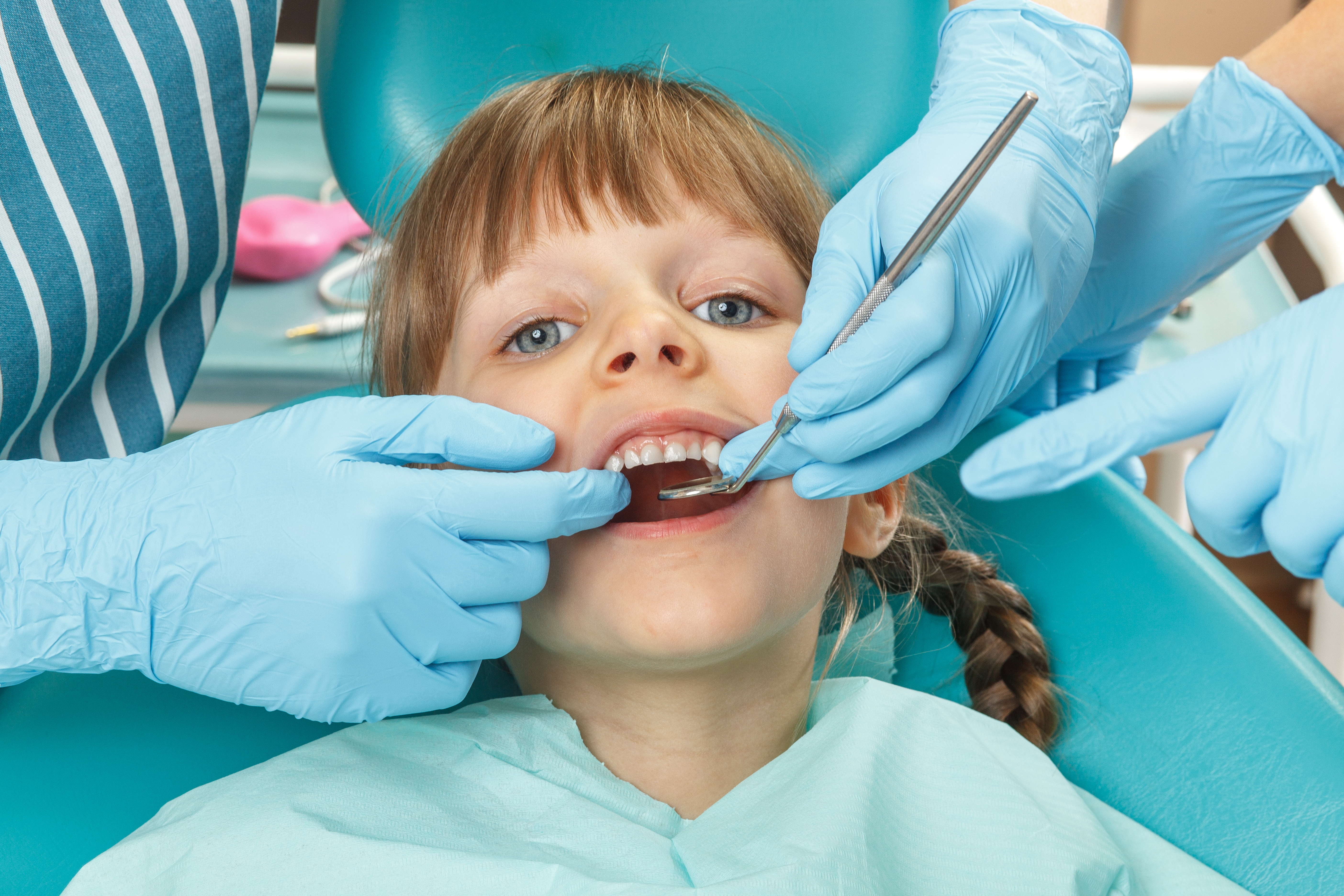Read All About It
Dental Related Articles


Treating Tooth Trauma in Children | Emergency Dental Care & Prevention Tips
Tooth trauma can be a frightening experience for children. It is important to seek immediate treatment when a child experiences tooth trauma. Hurst Pediatric Dentistry offers a variety of treatments to ensure that your child’s teeth remain healthy and strong.
In this article, we will discuss the causes of tooth trauma in children, possible treatments, the importance of seeking professional dental help for traumatic injuries, prevention tips to avoid tooth trauma, and soothing pain relief methods for a child’s injured tooth. By the end of this post, you should have a better understanding of tooth trauma and why it’s important to treat it.
What Is Pediatric Tooth Trauma?
Pediatric tooth trauma refers to any injury to a child's teeth, gums, or surrounding oral structures. These injuries may affect either baby (primary) teeth or permanent teeth and can range from mild chips to serious displacement or avulsion.
Common types of tooth trauma:
Enamel fractures (chipped teeth)
Enamel-dentin fractures
Tooth displacement (luxation or intrusion)
Avulsion (completely knocked out tooth)
Root fractures
Baby teeth injuries are treated differently than permanent teeth due to developmental concerns. Baby teeth are treated differently because they are temporary and serve as placeholders for permanent teeth. Aggressive treatment can risk damaging the developing permanent teeth underneath, so care is taken to balance function, comfort, and future dental development.
The Significance of Treating Tooth Trauma in Children
Children are more prone to tooth trauma than adults, making it important for parents and guardians to be aware of the risks and understand the significance of treating tooth trauma promptly. Tooth trauma can significantly impact children’s overall health, making seeking professional dental help essential.
Causes and Treatments
Tooth trauma can be caused by various activities such as sports injuries or falls. The severity and type of injury sustained by a child’s teeth or jawbone determine the necessary treatments. For instance, if there is an infection present or severe damage to a child’s tooth pulp, a pulpotomy (root canal) or pulpectomy (removal) may be required. Some teeth injuries need to be tended to quickly, so seek professional help in a timely manner.
Delaying treatment can result in serious consequences such as cracked or split teeth, or even permanent damage. Parents should pay attention and stay vigilant when they notice any signs like bleeding gums/teeth after an incident, or swelling/pain around the affected area. Preventive measures like teaching children proper oral hygiene practices and using protective mouth guards during contact sports can also help avoid dental trauma from occurring.
For pain relief at home, until professional medical assistance can be obtained, cold compresses are effective in reducing inflammation while providing a temporary numbing sensation. Recovery timeframes vary from a few days up to several weeks depending on the extent and type of the dental emergency. Patience and understanding play a crucial role during this process, especially when dealing with young children who experience fear and anxiety due to a lack of understanding of what happened.
Most dental issues can be treated in-office, but sometimes hospital dentistry may be needed if the patient is uncooperative, has severe anxiety, a mental or physical disorder, or if the dental issue is advanced.
Different Types of Treatments Available to Save Kids’ Vital Teeth
Dental trauma in children can be scary and overwhelming for a child. It’s essential to understand the different types of available treatments to save vital teeth and the signs and symptoms of possible infections or systemic diseases related to tooth trauma. With appropriate pediatric dentistry, diagnosing, treating, and preventing these traumas is possible
When visiting the dentist for the treatment of a traumatic dental injury in your child, x-rays will be taken to determine if any damage has occurred beneath the tooth’s surface or gums. Depending on the dental injury type, several treatments may be used for repair.
Minor fractures or chips may be treated with compomer and resin composite materials. Stainless steel crowns may be recommended if further protection is necessary. Amalgam fillings may also help protect exposed nerves within a tooth after an injury occurs.
Root canals are one of the many possible treatments recommended by pediatric dentists to address traumatic injuries to children’s teeth – especially if there is severe nerve damage involved from the trauma event itself. The proper treatment prognosis for each case is dependent on both the type and severity of the trauma.
Unfortunately, due to low public awareness of the risks posed by such types of dental traumas and potential resulting complications, people often don’t get help until the issue has escalated into a more serious health issue. It’s crucial to see a professional at the first sign of tooth trauma.
Tips for Parents to Prevent Tooth Trauma in Children
As parents, we know how crucial it is to care for our children’s teeth and prevent tooth damage. Dental trauma in children can cause severe consequences and lead to extensive pediatric dental therapy. Fortunately, there are ways to prevent dental trauma in children and address it if it happens.
The most essential approach to preventing dental trauma is having routine checkups and dental cleanings with a pediatric dentist. This will help in detecting any preexisting issues before they worsen, as well as in assessing your child’s dental health.
It is also important to be aware of common risk factors that can put your child at risk for dental trauma, such as incorrect use of helmets while engaging in activities like biking or skateboarding. Furthermore, teaching your child healthy oral hygiene habits and how to avoid risky activities will significantly aid in prevention.
Aside from prevention strategies, being conscious of indications of dental trauma from falls or sports injuries is critical so that you can act quickly if necessary. Falls and sports-related injuries are the most frequent causes of dental trauma in children aged 8 to 18 years old, so being vigilant is critical! If your child has suffered injuries such as chipped teeth or lost baby teeth, seek immediate treatment by calling us for urgent treatment or after-hours support.
If You Can't See the Injury Clearly: Helpful Guidance
In some cases, the injury might not be visibly apparent, especially if your child is in pain or unable to articulate what's wrong. Here are a few helpful pointers to guide you in such situations:
Stay calm and observe: Look for signs of trauma such as swelling, bleeding, difficulty eating, or reluctance to speak.
Ask simple questions: If your child is verbal, gently ask if anything hurts or feels loose in their mouth.
Use a flashlight: Gently inspect the mouth using a flashlight and a clean finger or tongue depressor to move the cheeks or lips.
Monitor behavior: Watch for unusual fussiness, refusal to eat, or complaints of pain even without visible damage.
Contact your dentist: If you're unsure whether trauma occurred, it's always better to call your pediatric dentist for guidance.

First Aid Steps for Dental Trauma
Immediate response is critical. Here are parent-friendly steps to follow after an injury:
Stop bleeding using clean gauze or a cloth.
Rinse mouth with water to clean debris.
Find the tooth or fragment, avoid touching the root.
If a permanent tooth is avulsed: Rinse briefly and reinsert it gently into the socket, or place it in milk/saline.
Avoid reimplanting baby teeth.
Apply a cold compress to reduce swelling.
Call your pediatric dentist immediately

Why See a Pediatric Dentist After a Dental Injury?
When your child experiences a dental injury—whether from a tumble, sports, or play—it can be scary and overwhelming. That’s why turning to a pediatric dentist is more than a smart move—it’s essential.
Pediatric dentists have specialized training in child dental development, allowing them to detect hidden complications that could affect permanent teeth or jaw growth. They’re also experts in child-friendly care, using gentle language and calming techniques to ease anxiety and build trust.
From treating knocked-out baby teeth to crafting custom mouthguards, pediatric dentists are uniquely equipped to handle emergencies with both skill and compassion—ensuring your child’s comfort, confidence, and long-term oral health.
Want to know all the reasons why seeing a pediatric dentist matters? Check out the full post here for a deeper look into their specialized role in your child’s health.

Practical Tips to Help Create a Safe Environment for Children’s Teeth
Creating a safe environment for children’s teeth is of utmost importance to prevent tooth trauma, which can be serious. It is critical to understand the risks of tooth trauma, including falls, sports injuries, and accidents with toys or other objects, among others.
Parents should take precautions to minimize these risks by ensuring their child wears protective sports gear, supervising play with small objects or risky activities, and attending regular dental checkups. Encouraging good oral hygiene habits, proper eating habits, and being aware of signs of tooth trauma can also help prevent damage.
Final Thoughts
Treating tooth trauma in children is an important and often overlooked aspect of oral health. Understanding the causes, treatments, and preventive measures that can help reduce the risk of dental trauma in children is essential. A variety of treatment options, from filling materials to stainless steel crowns for added protection, are available for saving teeth and reducing pain.
Although dental trauma can be frightening for parents and children alike, a pediatric dentist can effectively treat it. Additionally, during the process, patience and understanding are key. Don’t delay, take action now.
At our clinic, we understand how difficult this experience can be for both you and your child, so we always offer compassionate care with exceptional outcomes. If you have any questions about treating tooth trauma in children, please contact us or call us at (205) 969-7454.

19 INVERNESS CENTER PARKWAY, STE 250, BIRMINGHAM, AL 35242
TEL: 205.969.7454
E-MAIL: [email protected]
2018 © ALL RIGHTS RESERVED | PRIVACY POLICY | TERMS AND CONDITIONS
Site by Trustway Marketing Powered by Kyrios Systems